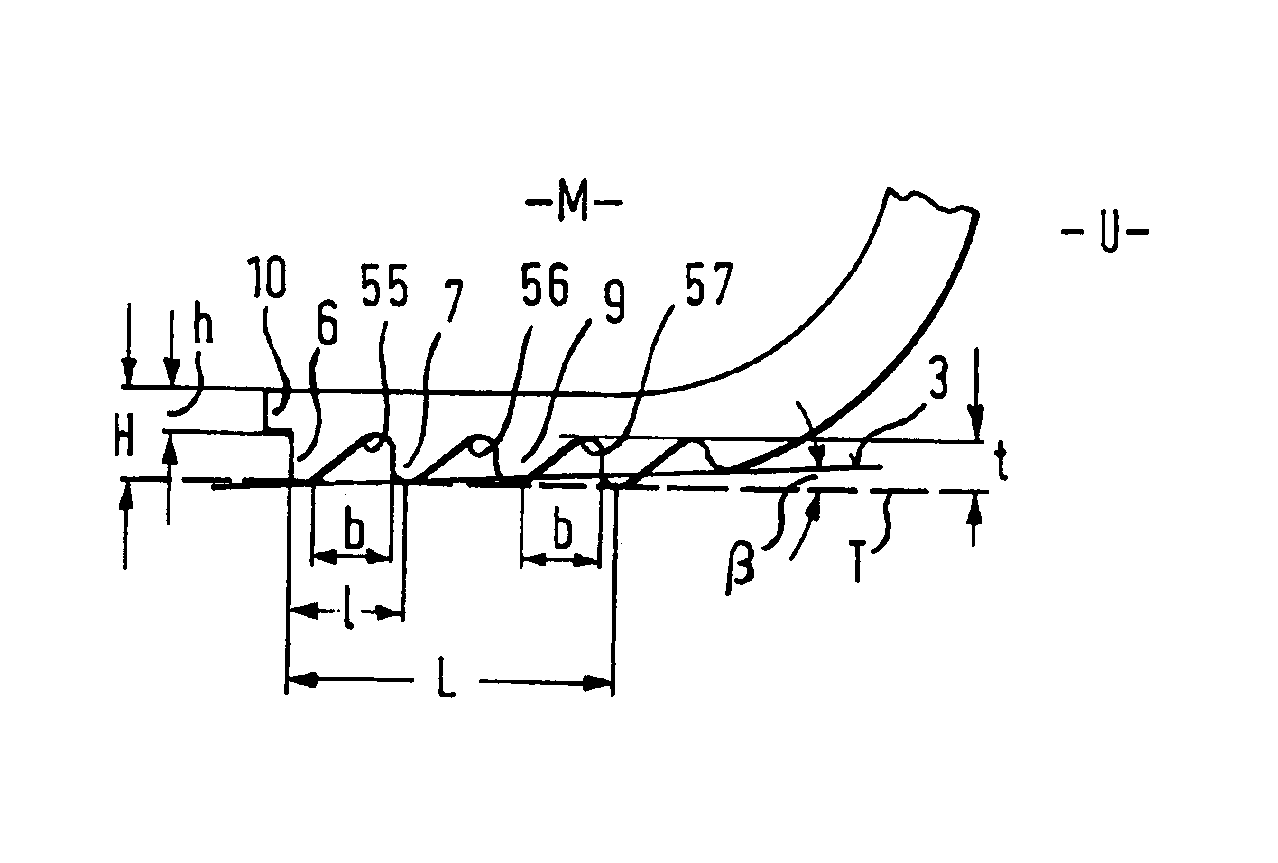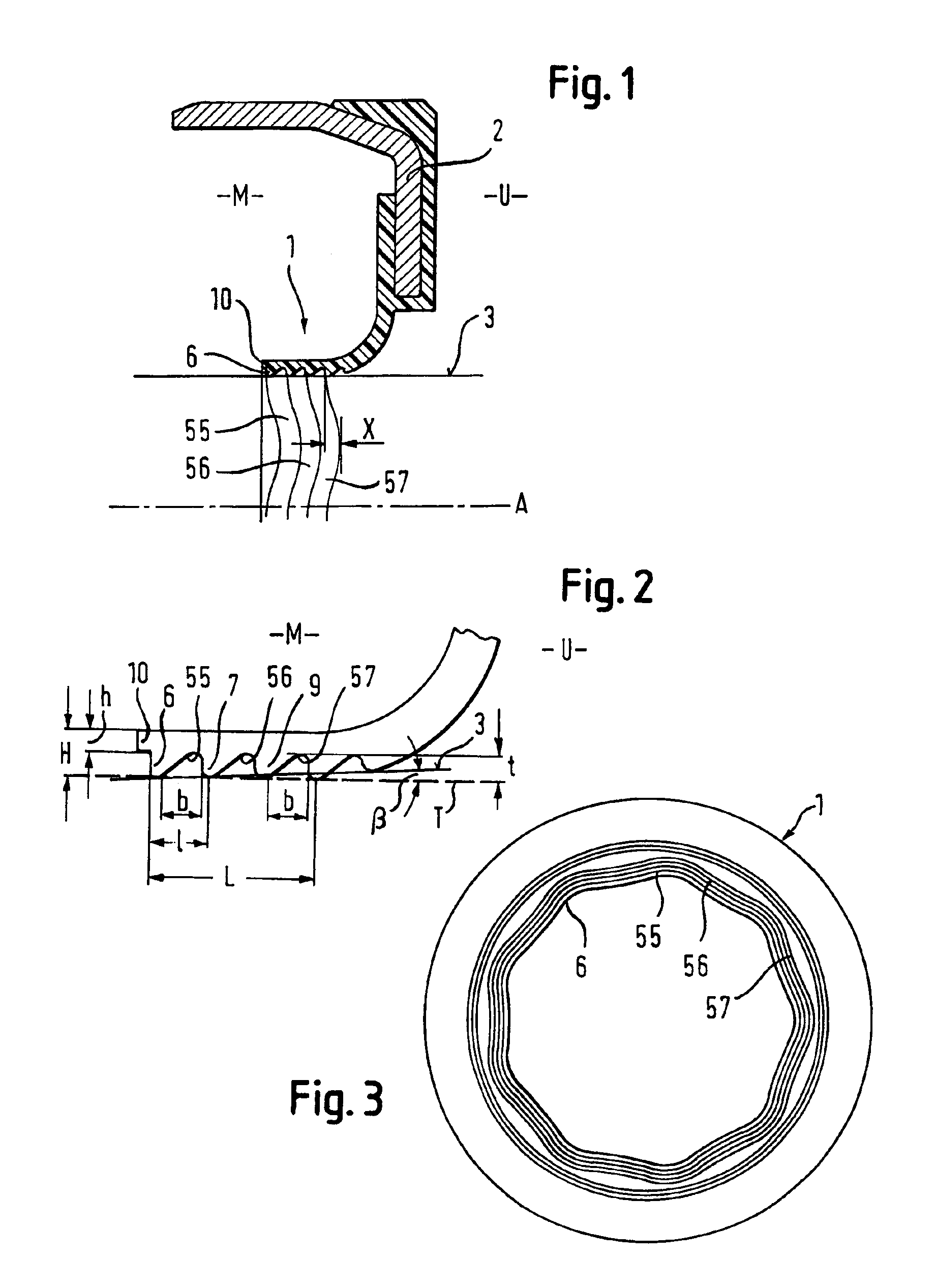Shaft sealing ring
a sealing ring and shaft technology, applied in the field of shaft sealing ring, can solve the problems of reducing service life, early failure, damage to the contact zone of the sealing lip, etc., and achieve the effects of prolonging the service life of the shaft sealing ring, avoiding damage, and being easy to manufactur
- Summary
- Abstract
- Description
- Claims
- Application Information
AI Technical Summary
Benefits of technology
Problems solved by technology
Method used
Image
Examples
Embodiment Construction
A shaft sealing ring shown in the figures for a shaft whose periphery is designated 3 comprises a sealing sleeve with a sealing lip made of an elastomer and connected directly to a stiffening plate 2 by vulcanizing. By virtue of its dimensioning, the sealing lip is flaccidly bendable, i.e. easily to be bent, and it is not pressed against the periphery 3 of the shaft by a separate spring such as a worm spring as usual.
When not installed, the sealing lip 1 is stretched out radially (cf. FIG. 3) and has an inner diameter which is smaller than the outer diameter of the shaft to be sealed. Once mounted, the sealing lip 1 is curved, as illustrated in FIG. 2, in a direction parallel to the axis of the shaft so that the sealing lip I approaches the shaft tangentially and has a cylindrical portion 11 entering into surface area engagement, along an axial length L, with the periphery of the shaft under slight contact pressure caused alone by the flexural elasticity of the sealing lip 1. The di...
PUM
 Login to View More
Login to View More Abstract
Description
Claims
Application Information
 Login to View More
Login to View More - R&D
- Intellectual Property
- Life Sciences
- Materials
- Tech Scout
- Unparalleled Data Quality
- Higher Quality Content
- 60% Fewer Hallucinations
Browse by: Latest US Patents, China's latest patents, Technical Efficacy Thesaurus, Application Domain, Technology Topic, Popular Technical Reports.
© 2025 PatSnap. All rights reserved.Legal|Privacy policy|Modern Slavery Act Transparency Statement|Sitemap|About US| Contact US: help@patsnap.com


